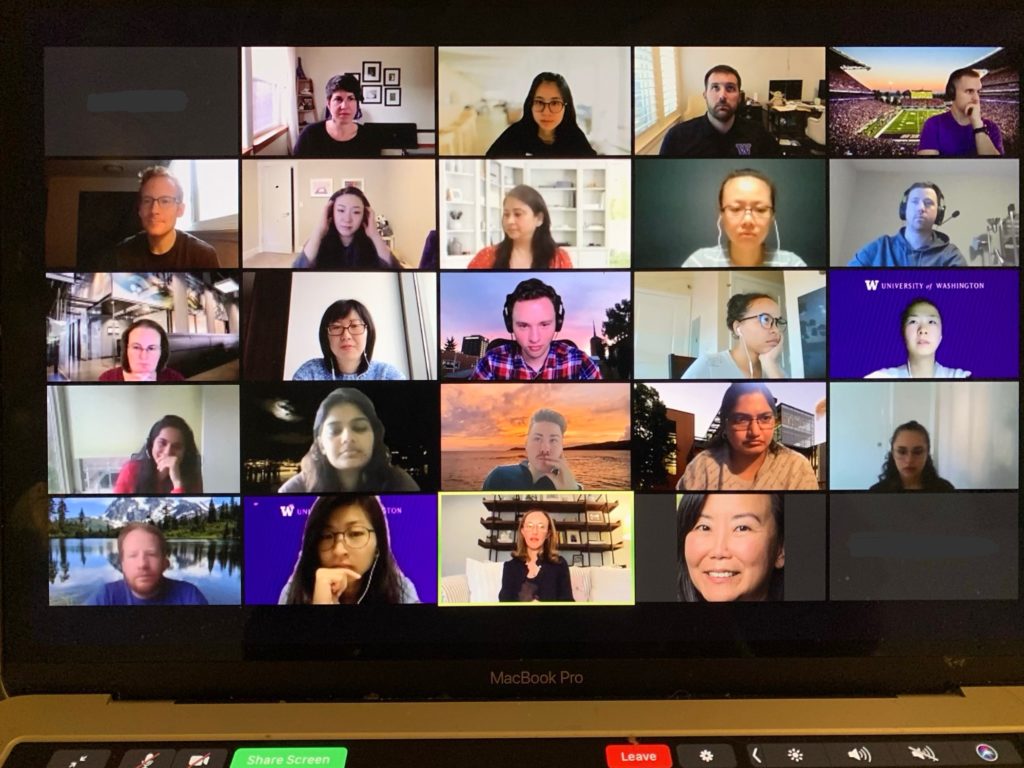Supply Chain Leader Series: Lessons From Alaska Airlines

A snapshot of the zoom class session with Lauren Kriegler from Alaska Airlines
The Supply Chain Leader Series (SCM 599) is a course that allows MSCM students to learn from and converse with industry leaders, through hosting guest speakers. Ultimately, the course prepares students for an industry partnered capstone project.
In a recent Supply Chain Leader Series class session, Lauren Kriegler—the Director of Fuel at Alaska Airlines shared supply chain lessons from her time supporting the company’s new uniform launch, as Director, Uniforms & Retail Ops. Put shortly, in 2016 Alaska Airlines made the decision to change uniforms for their frontline employees, and in doing so they became the first U.S airline to launch a custom uniform program certified to meet Standard 100 by OEKO-TEX, the highest industry standard for textile safety.
Since the launch, Kriegler has recently taken on a new role as the Director of Fuel at Alaska Airlines but still holds on to the lessons she and the company learned from their new uniform program.
Lesson # 1: Great Uniforms Take Time
You may be wondering, how a new uniform launch can take four years. At Alaska Airlines the answer was simple. “Uniforms are incredibly complex and incredibly personal,” Kriegler states. “We support a diverse population— whether in the Flight Deck, greeting guests at the Gate or working on the Ramp, we need high-quality garments that perform in the dynamic environments our teams work in every day.”
For Alaska Airlines this meant using surveys, focus groups, station visits, and wear tests across the system to make sure the best product possible was being delivered. The design phase of the uniforms was also a complicated and time-consuming process. In order to get their desired look, Alaska Airlines partnered with Seattle-based designer, Luly Yang.
It’s also important to note that the COVID-19 pandemic impacted the company’s timeline, as the uniform launch took place in March 2020, which was one of the most intense periods of COVID-19 induced supply chain disruption.
Lesson # 2: Uniform Programs are More Complex than You Think
At the level of a company as large as Alaska Airlines, the complexity of a new uniform program cannot be underscored. For example, a single garment used across multiple workgroups may be offered in 45 different sizes.
Furthermore, due to the importance of safety and the rigor of Standard 100 by OEKO-TEX, every single component must meet the standard in order to be included in a finished garment; more than 1,200 safety tests on fabrics, zippers, buttons, thread, linings and more were conducted.
Moreover, the program did not just deal with designing and implementing new uniforms, but also properly disposing, and or donating the old uniforms sustainably and safely.
Lastly, Alaska Airlines wasn’t just creating a new uniform program, but reimagining their uniform supply chain. Previously, like many large airlines, Alaska relied on a catalogue program. However, this time around Alaska Airlines leadership made the conscious decision to have increased oversight over the supply chain. “It is important that we have transparency, quality, and safety built into every aspect of our program,” explains Kriegler. “Getting closer to the product supply chain from the design and raw material stage through production and distribution allows us to have greater confidence in the program we deliver.”
Lesson # 3: Lead, Don’t Follow
We want to be leaders in this industry. More and more people are understanding the critical importance of what goes into our textiles
If a garment is labeled with Standard 100 certification by OEKO-TEX, it means that every piece of the garment from the threads to the buttons has been tested for substances harmful to human health.
“We want to be leaders in this industry. More and more people are understanding the critical importance of what goes into our textiles,” Kriegler explains the ambition behind this award-winning decision. “Our employees wear these garments each day. We want to make sure they can feel great and wear their uniform with pride, knowing it’s safe.
As we see more value placed on textile safety and quality, it’s great to see more carriers, clothing lines and retailers introduce rigorous textile safety standards into their organizations.
Written by Maryam Noor
MSCM Writer & Content Strategist
[email protected]
